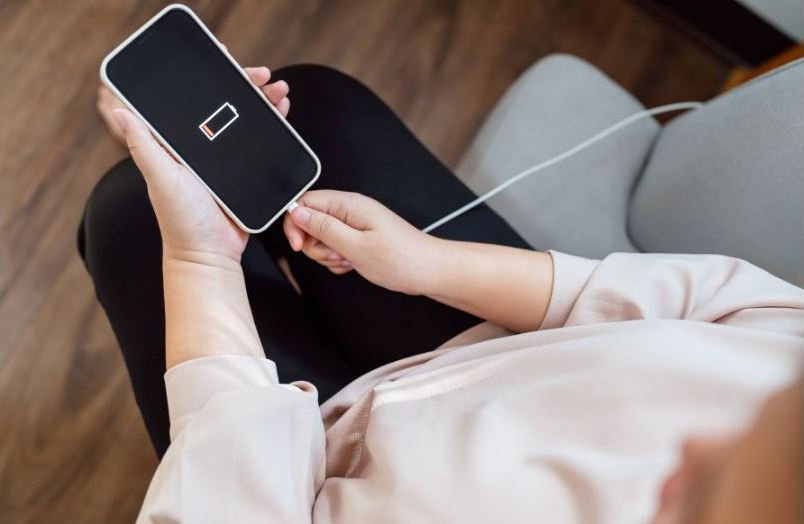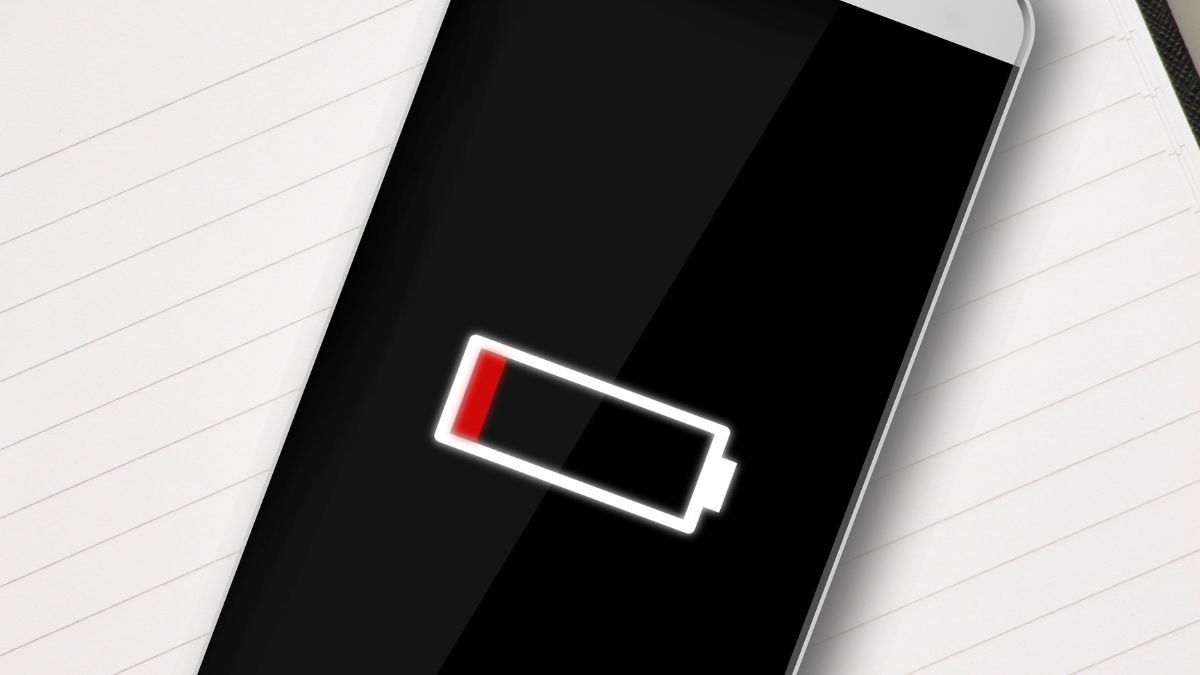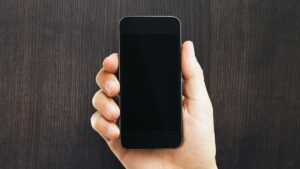Have you ever noticed your iPhone battery icon turn yellow? It can be confusing and leave you wondering what’s wrong with your phone. Fear not, because this guide will explain the reasons behind the yellow battery and how to easily fix it.
Why is My iPhone Battery Yellow?
The yellow battery icon on your iPhone signifies that Low Power Mode is activated. This is a built-in feature designed to conserve battery life when your phone’s charge dips below a certain level (usually 20%).
Low Power Mode temporarily reduces background activity, visual effects, and processor performance to extend battery life until you can recharge your device.
What Does Low Power Mode Do?
Here’s a breakdown of how Low Power Mode operates to preserve battery life:
- Reduced Background Activity: Apps running in the background are restricted, minimizing their battery drain. This might involve limiting automatic content updates, push notifications, and location services for certain apps.
- Visual Effects Tone Down: Animations and visual effects, such as motion wallpapers and auto-brightness adjustments, are toned down or disabled to conserve battery.
- Processor Performance Optimization: The iPhone’s processor throttles down slightly, reducing its overall power consumption. This may result in slightly slower app performance or frame rates in games.
While these adjustments help extend battery life, it’s important to note that Low Power Mode might impact certain functionalities. For instance, email fetching might occur less frequently, and background downloads might be paused.
Reasons for the Yellow Battery
There are two primary reasons why your iPhone battery might turn yellow:
1. Automatic Low Power Mode Activation
As mentioned earlier, when your iPhone’s battery level reaches around 20%, Low Power Mode automatically activates to conserve battery. You’ll see the yellow battery icon appear alongside a notification informing you that Low Power Mode is on. This serves as a reminder to charge your device to prevent it from shutting down unexpectedly.
2. Manual Low Power Mode Activation
You’re not limited to relying solely on automatic activation. You can also manually enable Low Power Mode through the Settings app, regardless of your current battery level. This can be beneficial if you anticipate being in a situation where access to a charger might be limited, and you want to maximize your battery life beforehand.
How to Fix the Yellow Battery
Fortunately, there are two straightforward ways to get rid of the yellow battery and restore normal battery function on your iPhone:
1. Charge Your iPhone
The simplest solution is to connect your iPhone to a charger and let it charge above the threshold at which Low Power Mode automatically deactivates (usually 80%). Once your battery level surpasses this point, the yellow icon will disappear, and your battery will turn green again. This approach effectively replenishes your battery and deactivates Low Power Mode, allowing your iPhone to operate at full capacity.

2. Disable Low Power Mode Manually
If you don’t need to conserve battery life and want your iPhone to function at its full potential, you can manually disable Low Power Mode. Here’s how:
- Open the Settings app on your iPhone.
- Tap on Battery.
- Switch the toggle next to Low Power Mode to the OFF position.
By following these steps, you’ll deactivate Low Power Mode, allowing your iPhone to resume its normal performance and visual effects. However, keep in mind that this might lead to a faster battery drain, especially if you’re engaging in resource-intensive activities.
3. Close Unused Apps
Regularly swipe up inactive apps in the App Switcher to prevent them from running in the background and draining the battery. These background processes can consume battery even when you’re not actively using the apps.
4. Adjust Screen Brightness
The display is one of the most significant battery consumers on your iPhone. Reducing the screen brightness can greatly enhance battery life. You can manually adjust the brightness using the Control Center or enable Auto-Brightness to allow the iPhone to adjust it automatically based on ambient lighting conditions.
5. Reduce Background App Refresh
Background App Refresh allows apps to fetch new content and updates periodically even when they’re not actively in use. While convenient, it can contribute to battery drain. You can manage Background App Refresh by going to Settings > General > Background App Refresh.
6. Enable Optimized Battery Charging:
This feature helps reduce battery wear and tear by learning your charging habits and delaying the final stages of charging until just before you typically wake up or unplug your iPhone. To activate it, navigate to Settings > Battery > Battery Health > Optimized Battery Charging.
7. Turn Off Location Services for Unnecessary Apps:
Location services can be helpful for various apps, but they can also drain battery life. Review which apps have access to location services and disable them for those you don’t need constantly. Navigate to Settings > Privacy > Location Services to oversee permissions for individual apps.
8. Turn off Wi-Fi and Bluetooth when they are not in use:
While these connectivity features offer convenience, they can drain battery life even when not actively transferring data. Consider turning them off when you don’t need them, especially in situations where you have limited battery life.
9. Update to the Latest iOS Version:
Apple often releases software updates that include bug fixes and optimizations that can improve battery life. Keeping your iPhone updated with the latest iOS version is essential for optimal performance and battery efficiency.
10. Consider Replacing an Aging Battery:
If you’ve had your iPhone for several years and notice a significant decline in battery life even after implementing these tips, it might be time to consider replacing the battery. Apple offers battery replacement services, or you can take your iPhone to a certified repair technician.
Beyond the Yellow Battery: Understanding Battery Health
It’s important to understand that the yellow battery indicator is just one aspect of iPhone battery health. You can access more detailed information about your battery health in the Settings app. Here’s how:
- Open the Settings app on your iPhone.
- Tap on Battery.
- Tap on Battery Health.
This section displays your battery’s maximum capacity, which is the percentage of its original capacity it can still hold. It also indicates whether your battery health is good or if it needs service. If your battery health is significantly degraded, replacing the battery might be necessary to improve overall battery life.
Conclusion
By understanding the reasons behind the yellow battery and implementing the strategies outlined above, you can effectively manage your iPhone’s battery life and ensure it lasts throughout the day. Remember, Low Power Mode is a valuable tool for extending battery life in critical situations, but you have various options to optimize battery usage and get the most out of your iPhone.
By adopting these practices and monitoring your battery health, you can keep your iPhone functioning optimally and avoid the dreaded yellow battery icon.
FAQs: Why is My iPhone Battery Yellow?
Q: My iPhone 8 Plus battery icon just turned yellow, what does it mean?
The yellow battery icon on your iPhone 8 Plus signifies that Low Power Mode is activated. This built-in feature helps conserve battery life by temporarily reducing background activity, visual effects, and processor performance when your phone’s charge dips below a specific level, typically around 20%.
Q: Why is the battery icon yellow, even when charging?
There are two possible reasons why your iPhone’s battery icon might remain yellow even while charging:
- Battery Level Below Deactivation Threshold: Although you’re charging your iPhone, the battery level might not have yet surpassed the threshold (usually 80%) at which Low Power Mode automatically deactivates. Once the battery level reaches this point, the yellow icon will disappear, and your battery will turn green again.
- Low Power Mode Manually Enabled: It’s possible that you manually enabled Low Power Mode through the Settings app, regardless of the current battery level. Even while charging, Low Power Mode will remain active until you manually disable it.
Recommended Reading: How to Resolve the iPad Not Charging Dilemma





